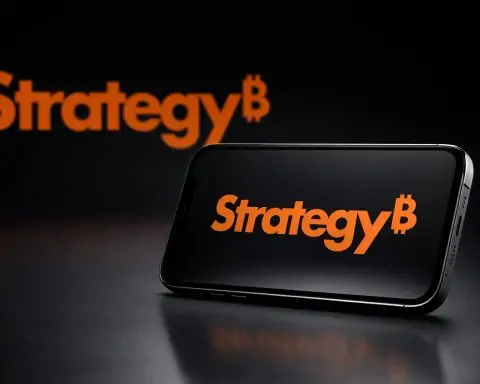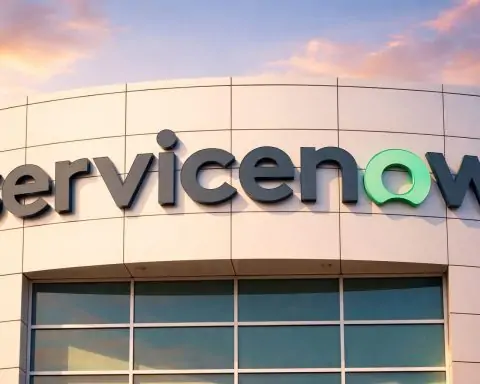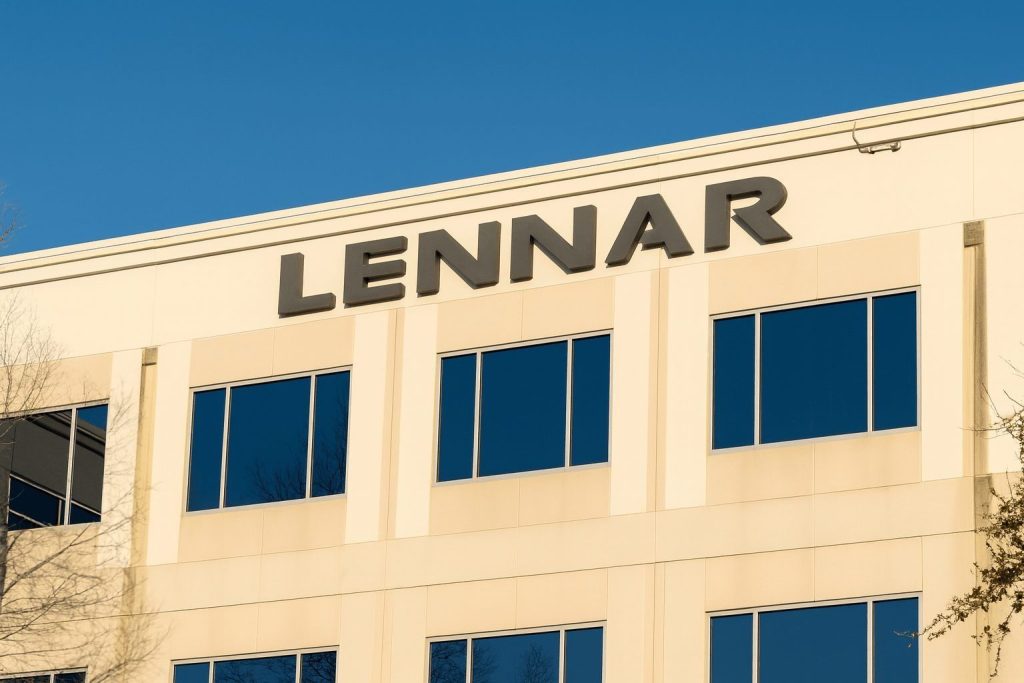UnitedHealth Group Incorporated (NYSE: UNH) shares traded higher on Wednesday, November 26, 2025, as Wall Street digested fresh headlines on Medicare commissions, tense hospital contract talks and new institutional trading disclosures. In late trading, UNH was changing hands around $330–331, up about 1.3% on the day, after closing Tuesday at $326.28. [1]
Even after today’s bounce, the health‑insurance giant remains deeply in the red for 2025. One data provider estimates a 46.2% loss over the past 12 months, while Zacks research pegs the year‑to‑date slide at roughly 35.5%, even as peer CVS Health has surged nearly 75% this year. [2]
Below, we break down UNH’s share price today, all the key November 26 news tied to the stock, and how these updates fit into UnitedHealth’s ongoing turnaround story into 2026. This article is for information only and is not personal investment advice.
UnitedHealth Group stock price today: modest rebound from 2025 lows
Based on late‑day data from multiple market trackers:
- Last traded price: about $330.63, up $4.35 (+1.33%) vs. Tuesday’s close. [3]
- Previous close (Nov 25): $326.28. [4]
- Today’s intraday range:$325.89 – $335.19. [5]
- 52‑week range:$234.60 – $622.83 – a reminder of how far the stock has fallen from its late‑2023/early‑2024 highs. [6]
- Market capitalisation: about $289 billion. [7]
- Valuation: trailing P/E ~16.6x, PEG ~1.2, with profit margin ~4.0% and return on equity ~17.5%. [8]
- Dividend yield: around 1.3%, on a trailing annual dividend of roughly $8.84 per share. [9]
Yesterday’s session (Tuesday, Nov 25) already showed signs of stabilisation: UNH gained 2.27%, closing at $326.28 after trading between $320.90 and $328.00, though volume fell versus the prior day. [10]
From a trend perspective, UNH is trading below its 50‑day moving average (~$344) but above its 200‑day (~$315), a pattern that often signals a stock trying to rebuild after a sharp drawdown. [11]
On a longer horizon:
- 1‑month return: about ‑10%
- 3‑month return: roughly +8.6%
- 1‑year return: around ‑46%
- 5‑year return: almost flat (about ‑2%). [12]
In short, today’s green day is a bounce inside a still‑damaged long‑term chart.
Key UnitedHealth headlines on November 26, 2025
Several fresh or updated stories on November 26 are framing how investors look at UNH today:
- Regulators eye commission cuts in Medicare plans
- Contract deadlines with two Midwestern health systems raise network risks
- New 13F filings show mixed institutional appetite for UNH
- New analysis pits UNH versus CVS on value, growth and risk
- Analyst consensus remains broadly positive despite the turmoil
Let’s go through each.
1. Regulators scrutinise Medicare commission cuts
A widely shared STAT investigation, republished by HealthLeaders on November 26, reports that several major insurers — UnitedHealthcare, Humana, Anthem (Elevance), Centene and others — have been cutting or halting broker commissions on certain Medicare Advantage and Part D plans. [13]
Key points from that reporting:
- The insurers are allegedly reducing payments to brokers on plans viewed as more likely to attract high‑cost enrollees, such as some special‑needs Medicare products.
- In some cases, companies have reportedly restricted access to online enrollment portals, forcing brokers or members to use less convenient channels. [14]
- Many of these changes came after Medicare’s annual enrollment period opened on Oct. 15 and ahead of its Dec. 7 close. [15]
- State insurance regulators and brokers argue the moves may violate rules requiring fair compensation and could amount to discouraging sicker or higher‑cost seniors from choosing certain plans. [16]
Why it matters for UNH stock
For UnitedHealth, this story highlights a delicate trade‑off:
- On one side, rising medical costs and new CMS payment rules are squeezing margins in Medicare Advantage, making tighter sales incentives and product pruning attractive from a profit standpoint. [17]
- On the other, these tactics can increase regulatory and reputational risk, especially when combined with existing Department of Justice investigations into parts of UnitedHealth’s Medicare billing and OptumRx pharmacy operations. [18]
Investors will be watching whether state regulators or CMS escalate their response — fines, new rules or mandated changes could all affect UNH’s 2026–2027 margin outlook.
2. Contract deadlines with SSM Health and TriHealth add network risk
A Newsweek piece published November 25 and updated the morning of November 26 shines a light on two high‑stakes contract battles between UnitedHealthcare and Midwestern hospital systems SSM Health and TriHealth. [19]
According to that report:
- UnitedHealthcare is in active talks with SSM Health, a large Catholic non‑profit system based in St. Louis that operates across Missouri and Illinois.
- SSM has issued a notice to end its contract, accusing UHC of “aggressive negotiations” and care denials and claiming the insurer’s profits come from delaying and denying care.
- UHC counters that SSM is seeking a roughly 14% rate increase over two years on commercial plans and argues that would fall heavily on local employers and taxpayers. [20]
- Simultaneously, UHC is negotiating with TriHealth in Cincinnati, another major regional system:
- UHC says TriHealth is asking for a 35% rate hike, about $94 million in total, of which roughly $80 million would come directly from employer health budgets.
- TriHealth responds that UnitedHealthcare underpays it by 20–30% versus competing systems, complains about a high rate of claim denials (tens of millions of dollars contested and mostly overturned), and seeks relief from what it calls “onerous administrative burdens.” [21]
If no agreements are reached by December 31, 2025, many UnitedHealthcare members could find SSM Health or TriHealth out‑of‑network starting in 2026, with higher out‑of‑pocket costs and disrupted care. Certain patients — such as those admitted before January 1, pregnant patients, or those in active cancer treatment — would retain in‑network rates under continuity‑of‑care rules. [22]
Investor takeaway
These contract standoffs underscore a key tension in U.S. managed care:
- UnitedHealth is pushing back on double‑digit hospital price demands to protect premiums and margins.
- Hospitals are increasingly willing to take disputes public, framing UHC as prioritising profit over patient access. [23]
For UNH shareholders, the near‑term risk is headline pressure and potential local membership losses; the potential upside is that successful negotiations reset pricing higher, partially offsetting elevated care utilisation.
3. Big‑money moves: mixed signals from institutional investors
Several MarketBeat alerts dated November 26 summarise the latest 13F filings around UnitedHealth:
- FourThought Financial Partners LLC
- Cut its UNH position by about 85% in Q2, selling 15,493 shares and ending the quarter with 2,699 shares worth roughly $842,000. [24]
- XTX Topco Ltd
- Opened a new UNH stake in Q2, buying 9,595 shares valued near $3.0 million at the time of filing. [25]
- J.W. Cole Advisors Inc.
- Increased its holdings by 42.1%, purchasing 5,823 additional shares and bringing its total to 19,644 shares, valued around $6.1 million. [26]
Across these filings, MarketBeat notes that roughly 87.9% of UnitedHealth’s float is held by hedge funds and other institutional investors, underscoring UNH’s status as a core “big‑money” healthcare holding even after this year’s painful drawdown. [27]
How to read it
- Some managers are clearly reducing risk after a volatile year.
- Others are adding exposure at lower valuations, effectively treating UNH as a turnaround opportunity with improving fundamentals.
For individual investors, this is a reminder that smart money is not monolithic — the 2025 UNH story is controversial enough that professional opinions genuinely diverge.
4. UNH vs CVS: who looks better on November 26?
A detailed Zacks analysis, syndicated via Finviz under the headline “Battle of Benefits: Will UNH Deliver the Bigger Dose or CVS?” compares UnitedHealth with CVS Health on growth, profitability and valuation. [28]
Key UnitedHealth highlights from that piece and company filings:
- Business model & scale
- UNH runs on its familiar dual engine: the UnitedHealthcare insurance arm and Optum (health services, PBM, care delivery, behavioral and virtual care).
- UnitedHealthcare covered about 50.1 million people as of September 30, 2025, up 1.6% year‑on‑year. [29]
- Growth
- Q3 2025 revenue:$113.2 billion, up 12% YoY.
- Segment growth: about 16% at UnitedHealthcare and 8% at Optum, driven by commercial membership growth and strength in Optum Rx. [30]
- Margin pressure & medical costs
- Medical care ratio (MCR) rose to about 89.9% in Q3 from 85.2% a year ago, indicating a greater share of premium dollars going out as claims. [31]
- Zacks estimates medical costs jumped ~21% year‑on‑year in the quarter, and projects about 18.5% growth for full‑year 2025, reflecting higher utilisation. [32]
- Guidance & balance sheet
- UnitedHealth raised its 2025 adjusted EPS floor from $16.00 to $16.25 and now guides to at least $14.90 in GAAP EPS for the year, on revenues expected between $445.5–$448 billion (guidance initially set in Q2 and reaffirmed in Q3). [33]
- The company finished Q3 with about $30.6 billion in cash and short‑term investments versus roughly $7.7 billion in near‑term debt, and a debt‑to‑capital ratio of about 41.6%, lower than CVS and below its industry average. [34]
- Valuation & performance vs CVS
- Zacks/Finviz put UNH at a forward P/E of about 18.7x, versus roughly 11.1x for CVS.
- Year‑to‑date, UNH shares are down about 35.5%, while CVS is up roughly 74.8%. [35]
The analysis concludes that CVS currently offers the more attractive risk‑reward, largely thanks to cheaper valuation and improving margins, while UnitedHealth remains a powerful franchise but faces more acute near‑term earnings pressure and regulatory overhangs. [36]
5. Analyst and model views: a cautious “buy the leader” stance
Despite the rough year, most Wall Street and independent analyst platforms still lean positive on UNH:
- A Seeking Alpha “2‑Minute Analysis” video published early on November 26 notes that:
- The site’s Quant system currently rates UNH a “Hold”, reflecting mixed momentum and earnings revisions.
- 17 Seeking Alpha analysts over the last 30 days collectively rate the stock a “Buy”.
- 27 Wall Street analysts over the last 90 days also maintain a “Buy” consensus. [37]
- Indian brokerage platform INDmoney, aggregating 32 analysts, shows:
- 87.5% of analysts rate UNH “Buy”, 12.5% “Hold”, 0% “Sell”.
- An average target price of about $386.72, implying roughly 14.5% upside from today’s ~$330.6. [38]
In other words, the Street largely still sees UNH as a wounded leader rather than a broken story, but expects muted earnings in 2025 before a more convincing recovery from 2026 onwards.
Fundamental backdrop: UnitedHealth’s 2025 reset
To understand why today’s news matters, it helps to recap UnitedHealth’s turbulent 2025.
A year of reset: utilisation shock, guidance suspension and leadership change
- Early in 2025, UNH was hit by surging medical utilisation, including higher‑than‑expected procedure volumes and more expensive care among seniors.
- In April, the company reported Q1 revenue of $109.6 billion, up $9.8 billion year‑over‑year, but was forced to revise its full‑year guidance downward due to elevated care trends. [39]
- By May, UnitedHealth suspended its 2025 outlook entirely, a rare step for a company of its size. [40]
- Amid the turmoil and a sharp share‑price decline, Andrew Witty stepped down, and long‑time former CEO Stephen Hemsley returned to lead what management has described as a multi‑year performance and cultural reset. [41]
The combination of guidance withdrawal, rising medical costs and Justice Department probes into certain Medicare and pharmacy operations triggered a heavy derating in the stock. [42]
Q2 and Q3: re‑establishing guidance and showing “better‑than‑feared” numbers
In July, UNH re‑established its 2025 outlook, guiding for:
- Revenue:$445.5–$448.0 billion.
- Net EPS: at least $14.65.
- Adjusted EPS: at least $16.00. [43]
Then, on October 28, UnitedHealth reported Q3 2025 results and nudged guidance higher: [44]
- Revenue:$113.2 billion, up about 12% year‑over‑year.
- GAAP earnings per share:$2.59;
- Adjusted EPS:$2.92, beating analyst estimates in the $2.74–$2.80 range.
- Cash from operations:$5.9 billion, about 2.3x net income, signalling still‑strong cash generation.
- Updated 2025 guidance: net EPS ≥ $14.90; adjusted EPS ≥ $16.25.
Independent coverage from outlets like Investopedia, AP and The Wall Street Journal all described the quarter as “stronger than expected” and highlighted that while net income fell roughly 60% year‑on‑year (due to earlier charges and elevated care costs), adjusted earnings and revenue beat Wall Street forecasts, and the all‑important medical‑loss ratio came in below consensus fears (89.9% vs ~90.7% expected). [45]
For the stock, that Q3 print sparked a short‑term rally, but the longer‑term damage from earlier in the year means UNH is still down roughly 27–45% in 2025, depending on the time window used. [46]
Medicare & ACA shake‑up: shrinking to grow stronger
In parallel with the commission changes and broker tensions discussed earlier, UnitedHealth is undertaking a major reshaping of its Medicare and Affordable Care Act (ACA) book:
- A series of reports and company disclosures indicate that UNH plans to:
- Exit Medicare Advantage plans in about 109 counties starting in 2026.
- Shut down over 100 Medicare plans covering roughly 600,000 members, particularly PPO products, while shifting many seniors into HMO and special‑needs plans that offer tighter cost control. [47]
- Reduce its Medicare Advantage membership by around one million people by 2026, while still aiming to offer plans to 94% of eligible U.S. beneficiaries. [48]
- Aggressively raise premiums and withdraw from some ACA exchange markets, with one analysis suggesting a two‑thirds reduction in ACA enrolment as the company responds to lower reimbursement and higher utilisation. [49]
UnitedHealth has warned that new CMS Medicare payment rules could pose about $4 billion of profit risk in 2026, which these portfolio changes are designed to offset. [50]
At the same time, a Reuters report on November 24 suggested the White House is considering a two‑year extension of ACA premium subsidies, a move analysts say would be “better than feared” for health insurers because it reduces the risk of a 2026 enrolment shock. [51]
Net effect: UnitedHealth is trading some growth and headline goodwill for margin stability, which could be favourable for long‑term earnings but adds near‑term political and reputational friction.
What November 26 means for UNH investors
Putting all of this together, here’s how many market participants are likely interpreting today’s mix of price action and headlines.
Short‑term: a relief bounce with ongoing headline risk
- Today’s 1–2% gain extends a small rebound off recent lows, with the stock now above its 200‑day moving average but still below its 50‑day. [52]
- Regulatory stories about broker commissions and contract disputes with SSM Health and TriHealth ensure UnitedHealthcare will stay in the news, which can translate into volatility. [53]
- The fresh 13F data show some institutions taking profits or cutting exposure, but also new and larger positions being built, suggesting no consensus “all clear” or “all gone” moment yet. [54]
Medium‑term: fundamentals stabilising, but earnings still under pressure
On the fundamental side:
- Revenues are growing at double‑digit rates again, cash flows remain strong, and 2025 guidance has been reinstated and slightly raised. [55]
- However, margin compression from high utilisation, the planned Medicare and ACA retrenchment, and intensifying regulatory oversight mean that EPS is expected to be down sharply in 2025 before returning to growth in 2026. [56]
Valuation sits in a kind of no‑man’s‑land:
- Around 16–17x trailing earnings and a forward multiple near 18–19x, UNH is no longer priced like a hyper‑growth stock, but it still trades at a premium to value‑oriented peers like CVS. [57]
How optimists and sceptics might each frame UNH today
Bullish investors tend to emphasise:
- UnitedHealth’s unmatched scale in both insurance and health services. [58]
- Still‑strong revenue growth (12% YoY in Q3) and impressive ROE (~17–19%) despite the headwinds. [59]
- A cleaner, more sustainable Medicare and ACA book by 2026, after the current round of cuts and repricing. [60]
- A mostly positive analyst consensus and a mid‑teens percentage upside to the average target price around $387. [61]
More cautious or bearish investors focus on:
- The risk that regulators crack down on commission cuts and enrolment practices in Medicare, raising compliance costs or limiting some of the cost‑saving levers UNH is pulling today. [62]
- Justice Department investigations into Medicare billing and OptumRx, which add legal and reputational overhang. [63]
- Hospital contract conflicts like those with SSM Health and TriHealth, which amplify the narrative that UnitedHealth is willing to let networks shrink rather than meet provider pricing demands. [64]
- The fact that peers like CVS have managed to expand margins and beat earnings estimates consistently, all while trading at materially lower valuation multiples. [65]
Key themes and dates to watch next
For anyone following UNH (again, not as personalised advice, but as general information), the next few weeks and months bring several watchpoints:
- Dec 7, 2025 – End of Medicare Annual Enrollment
- Regulators’ and CMS’s response to commission and enrollment changes may become clearer after the enrolment window closes. [66]
- Dec 31, 2025 – Contract deadlines with SSM Health and TriHealth
- Expect further updates from UnitedHealthcare and the hospital systems; whether deals are reached or networks break will matter both for member satisfaction and local earnings impact. [67]
- Early–mid January 2026 – Expected Q4 2025 earnings
- Based on historical patterns, services like MarketBeat estimate UNH will report Q4 around mid‑January 2026, though the exact date should be confirmed on the company’s investor site. [68]
- That call will likely include UnitedHealth’s formal 2026 guidance, which many investors view as the real test of the turnaround story. [69]
- Policy backdrop – ACA subsidies and Medicare rules
- Any official move to extend Affordable Care Act subsidies for two more years, as reported by Reuters, would reduce one source of 2026 uncertainty. [70]
- Final implementation details of Medicare payment changes and state‑level responses to commission cuts will shape the earnings path in 2026–2027. [71]
References
1. www.indmoney.com, 2. www.indmoney.com, 3. www.indmoney.com, 4. www.indmoney.com, 5. www.indmoney.com, 6. www.indmoney.com, 7. www.indmoney.com, 8. www.indmoney.com, 9. www.indmoney.com, 10. stockinvest.us, 11. www.marketbeat.com, 12. www.indmoney.com, 13. www.healthleadersmedia.com, 14. www.statnews.com, 15. www.healthleadersmedia.com, 16. www.statnews.com, 17. finviz.com, 18. finviz.com, 19. www.newsweek.com, 20. www.newsweek.com, 21. www.newsweek.com, 22. www.newsweek.com, 23. www.newsweek.com, 24. www.marketbeat.com, 25. www.marketbeat.com, 26. www.marketbeat.com, 27. www.marketbeat.com, 28. finviz.com, 29. finviz.com, 30. www.unitedhealthgroup.com, 31. www.marketwatch.com, 32. finviz.com, 33. www.unitedhealthgroup.com, 34. finviz.com, 35. finviz.com, 36. finviz.com, 37. seekingalpha.com, 38. www.indmoney.com, 39. www.unitedhealthgroup.com, 40. www.unitedhealthgroup.com, 41. www.investopedia.com, 42. apnews.com, 43. www.unitedhealthgroup.com, 44. www.unitedhealthgroup.com, 45. www.investopedia.com, 46. www.marketwatch.com, 47. coincentral.com, 48. apnews.com, 49. www.morningstar.com, 50. coincentral.com, 51. www.reuters.com, 52. www.indmoney.com, 53. www.healthleadersmedia.com, 54. www.marketbeat.com, 55. www.unitedhealthgroup.com, 56. finviz.com, 57. www.indmoney.com, 58. finviz.com, 59. www.unitedhealthgroup.com, 60. coincentral.com, 61. www.indmoney.com, 62. www.healthleadersmedia.com, 63. finviz.com, 64. www.newsweek.com, 65. finviz.com, 66. www.healthleadersmedia.com, 67. www.newsweek.com, 68. www.marketbeat.com, 69. apnews.com, 70. www.reuters.com, 71. www.healthleadersmedia.com







